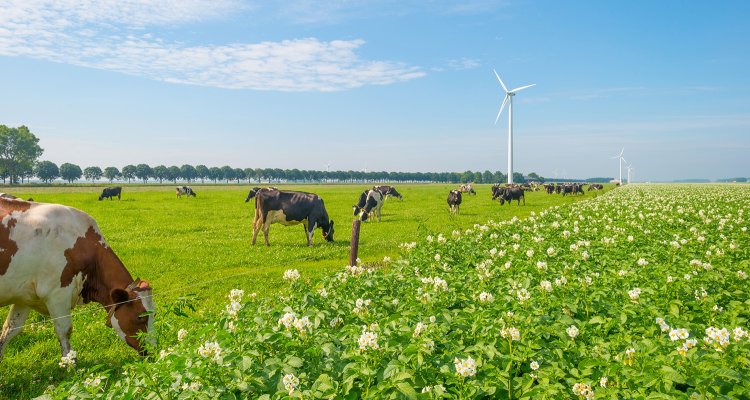
News
Achievable climate goal for Dutch mineral agricultural soils
Carbon sequestration in mineral agricultural soils, aiming to contribute to the climate issue while sustainably managing agricultural soils, is it possible? After five years of research in the ‘Smart Land Use’ research program, an assessment has been made. Conclusion: the climate goal of an additional 0.5 Megatons of CO2 sequestration in mineral agricultural soils is theoretically achievable. The condition is that measures contributing to this goal are applied sufficiently and skilfully by agricultural entrepreneurs.
By adding more organic material, such as plant residues, manure, and compost, to the soil, it is possible to sequester carbon in the soil. This helps address the climate issue by removing CO2 from the air. Moreover, it often enhances soil health.
Various measures have been investigated in the Smart Land Use programme regarding their effect on carbon sequestration. The impact of these measures on nitrous oxide emissions and soil functions such as soil fertility, biodiversity, climate adaptation, and water quality has also been examined. An example of such a measure is leaving crop residues from cereal crops (straw) in the field after harvest.
Measures on arable land and grassland have been examined, distinguishing between effects on sandy and clay soils. The research indicates that, in theory, achieving the climate goal for mineral agricultural soils is possible. The expected short-term increase in nitrous oxide emissions is not anticipated to offset the positive effect of carbon sequestration. Other soil functions will remain the same or change slightly positively.
Implementation is crucial
It is essential that enough farmers adopt these measures. For this, relevant knowledge needs to reach farmers, and there must be a sound business model. The research indicates that many measures involve (limited) costs in the short term. ‘Smart Land Use’ has devised methods for the National Carbon Market Foundation that could be used for selling so-called carbon certificates. This is a potential solution for farmers to generate additional income by implementing carbon sequestration on their farms.
Integration of knowledge
All knowledge accumulated in the past five years within ‘Smart Land Use’ has been compiled in a comprehensive report. To achieve climate goals, it is crucial to consider all aspects of carbon sequestration and implementation. Thalisa Slier, Soil and Climate researcher at Wageningen University & Research, states: "This final report consolidates all the knowledge from the program. We not only measured the effects of measures but also followed farmers who implemented them. Valuable lessons can be learned from this. Of course, carbon sequestration is not the only way to address the climate issue, but at the moment, every little bit helps. Furthermore, our research has shown that the examined measures also contribute to healthier soils."
Smart Land Use
In the Smart Land Use research program, knowledge is provided for the climate goal of an additional sequestration of 0.5 Megaton CO2 equivalents in mineral agricultural soils. It also investigates the effect of carbon sequestration in agricultural soils on achieving the goal of sustainably managing all agricultural soils by 2030. This program, started in 2018, is funded by the climate funds of the Ministry of LNV. In this program, WUR collaborates with various partners, including the Louis Bolk Institute and CLM.